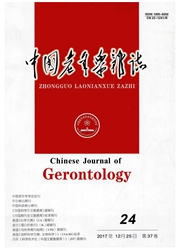

 中文摘要:
中文摘要:
目的探讨静脉和气管内注射利多卡因对老年高血压患者全麻拔管应激反应的影响。方法选择2013年9月至2014年1月择期行甲状腺手术的老年高血压患者60例,血压控制稳定,年龄60~85岁,美国麻醉医师学会(ASA)分级Ⅰ级或Ⅱ级,随机分成利多卡因气管内麻醉组(T组),静脉给药组(V组)和对照组(C组),每组20例。手术结束前20 min T组于气管内给予2%利多卡因3 ml、V组静脉注射2%利多卡因1.5 mg/kg,C组不经气管或静脉给予任何药物。观察全麻诱导前T0(基础值),手术结束时(T1),拔管时(T2),拔管5 min(T3)各时间点平均动脉压(MAP)、心率(HR)、血浆皮质醇浓度(Cor)、肾上腺素(E)和去甲肾上腺素(NE)的变化和拔管5 min内患者呛咳程度。结果与C组相比,T组和V组在拔管时和拔管后患者的呛咳程度明显低于对照组(P<0.01),所有患者T2、T3的MAP、HR、血浆Cor、E和NE浓度均比T0和T1增高;与C组相比,T组和V组在T2、T3时间点MAP、HR、血浆Cor、E和NE浓度较低;与V组相比,T组MAP、HR和Cor和NE浓度在T2和T3时刻更低(P<0.05)。结论静脉和气管内注射利多卡因均能明显预防老年高血压患者拔管应激反应的发生,气管内给药效果更佳。
 英文摘要:
英文摘要:
Objective To evaluate the effects of endotracheal injection versus intravenous lidocaine on stress response to tracheal extubation in elderly patients with hypertention after general anesthesia.Methods Sixty ASA statusⅠandⅡ elderly patients with hyperten-tion control stability scheduled for thyroidectomy undergoing general anesthesia were included .Patients were randomly divided into endotra-cheal(T) ,intravenous(V) and control groups(C)with 20 patients in each group.The levels of mean arterial pressure(MAP) ,heart rate (HR) ,corticosteroid(COR) ,epinephrine(E) and norepinephrine(NE) were recorded at baseline(T0) ,the end of the surgery(T1) ,extu-bation(T2) and 5 min after extubation(T3) .Degree of cough within 5 min was also documented.Results The incidences of cough during T2 and T3 in groups T and V were significantly lower than those of group C(20%,50%vs 70%,P<0.01);The levels of MAP,HR,COR,E and NE in T2 and T3 were significantly higher than those in T0 and T1( P<0.05);and they were lower in group T and V than those in group C(P<0.05) .To some degree ,the levels of MAP ,HR ,COR and NE in group T were lower than those in group V(P<0.05).Conclusions Endotracheal and intravenous lidocaine could reduce cardiovascular response to tracheal extubation in elderly patients with hypertention af-ter general anesthesia .Endotracheal injection of lidocaine seems more effective.
 同期刊论文项目
同期刊论文项目
 同项目期刊论文
同项目期刊论文
 期刊信息
期刊信息
